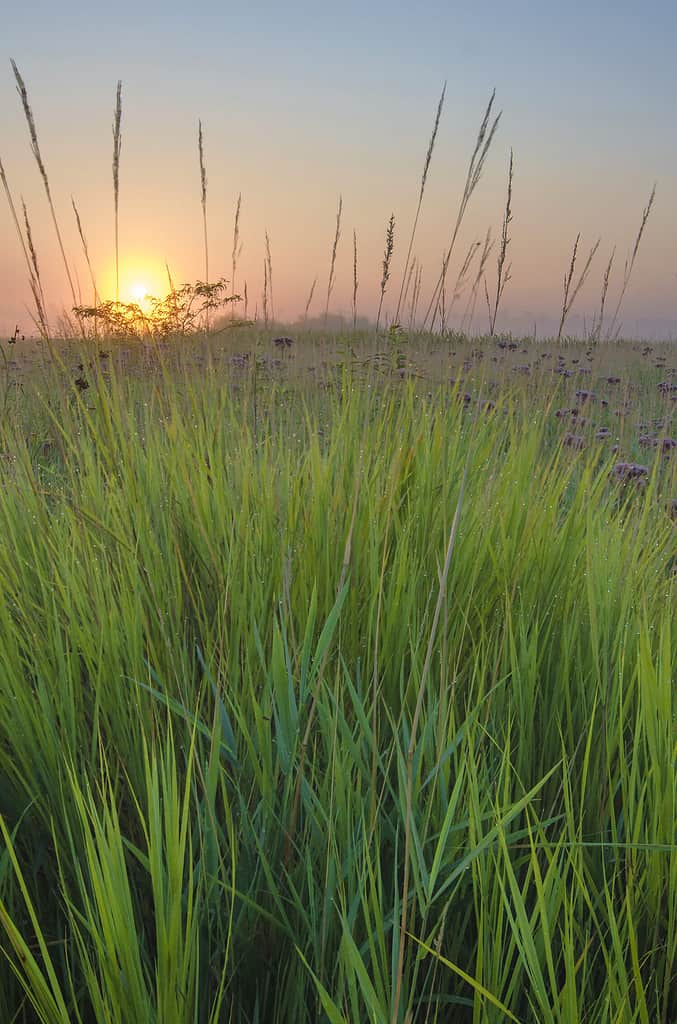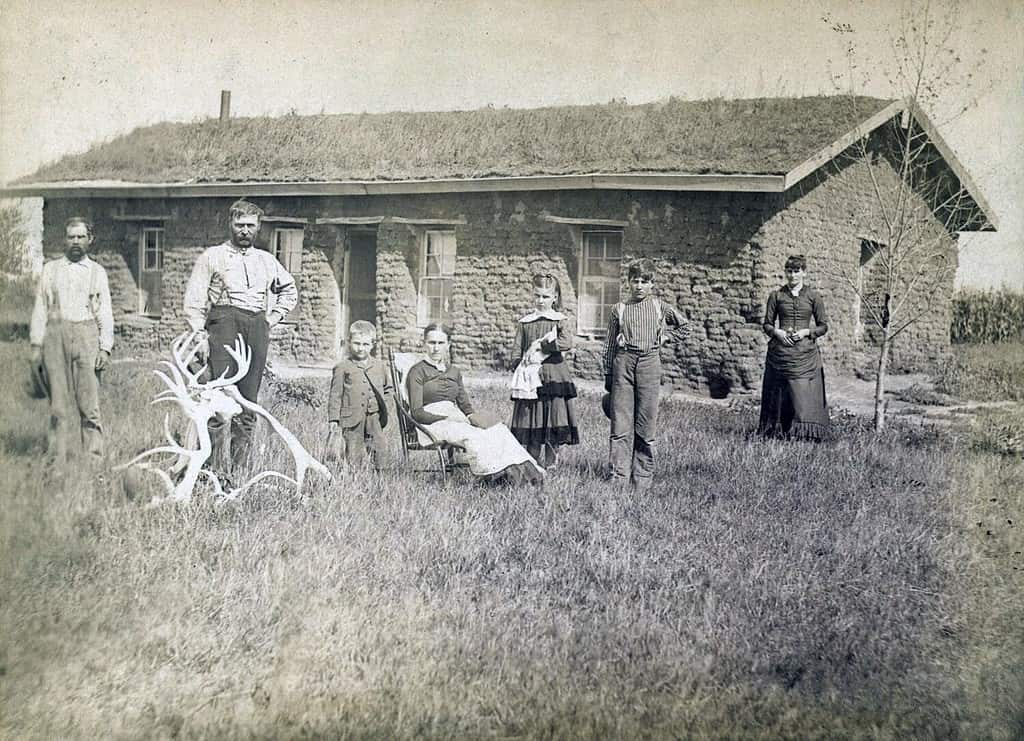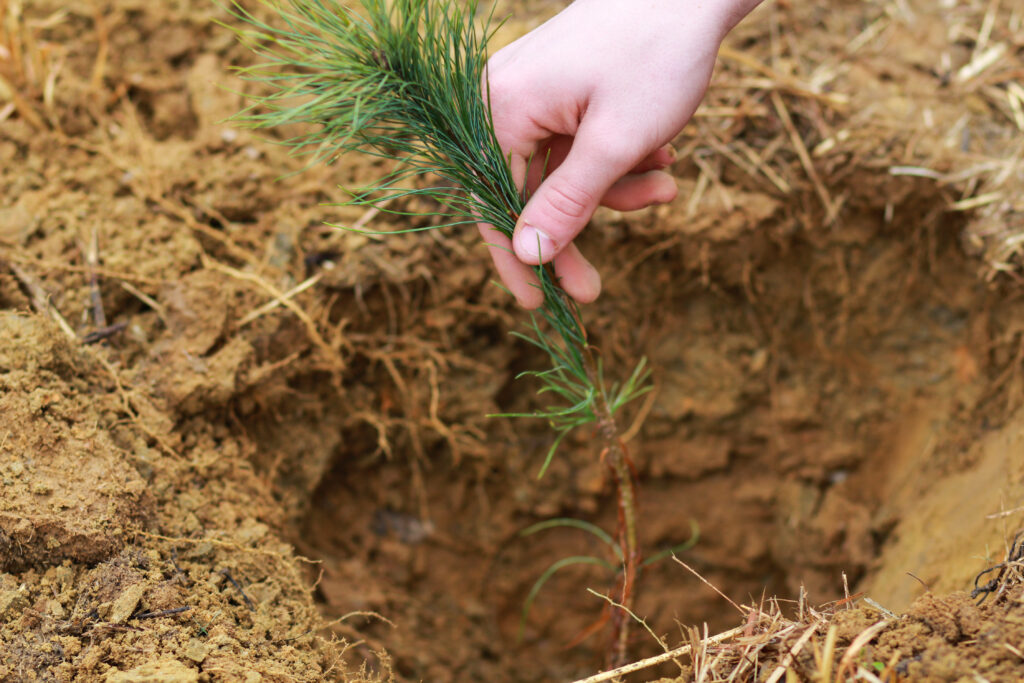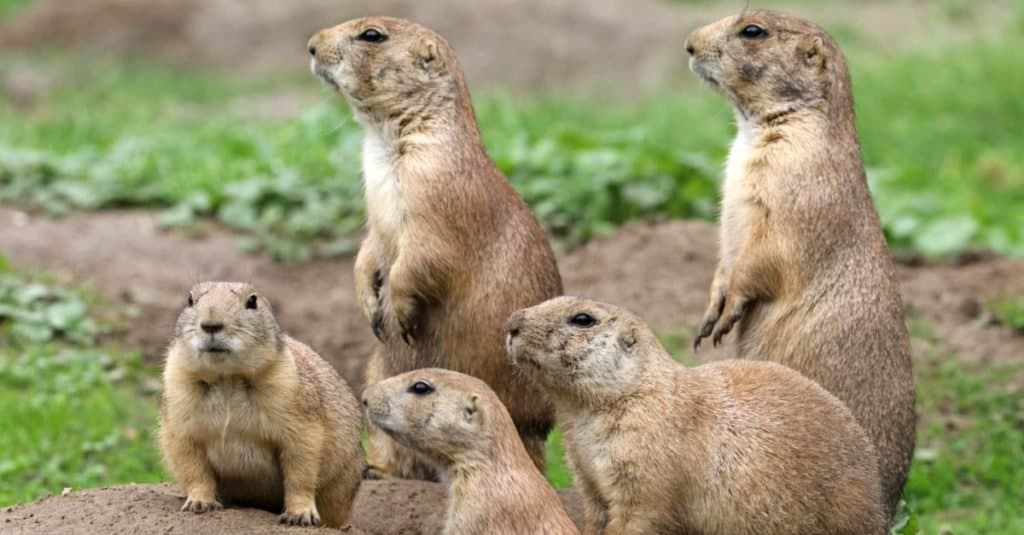Nebraska isn’t usually associated with forests, but instead with endless prairies or corn. But in fact, Nebraska is home to the largest man-made forest in the United States. Moreover, it is also the birthplace of National Arbor Day. This holiday has resulted in the planting of millions of trees across the country. So just where is the largest forest in Nebraska . . . and what lives in it?

This view of the Dismal River shows the reforested sandhills in the Nebraska National Forest.
©marekuliasz/Shutterstock.com
Treeless Nebraska
A Sea of Prairie Grass
Early settlers in Nebraska resided in an endless sea of prairie grass, sometimes as tall as a horse’s head. The roots of the grass went down as deep as the plant was high, creating a thick network that held the soil in place. Centuries of grass dying seasonally before being renewed created a layer of rich organic matter. This soil made good farmland, especially in the better-watered east. In the western part of the state, grass formed a thin cover over the famous Sandhills. These hills were all that remained of an ancient seabed that had almost become a full-fledged desert.

The prairie grass in Nebraska once grew as high as a horse’s head!
©Hank Erdmann/Shutterstock.com
A Big Problem
The lack of trees in the Nebraska Territory was a big problem for homesteaders. They didn’t have the building materials and firewood they needed, so they had to improvise with sod instead. The soil was so compacted with roots, it could be cut out in blocks with saws. It was used as building material and then plastered over with mud. Dirt-floored sod houses with thatch roofs were common starter homes in those days. Summertime was especially hard for people working outdoors in 90°-100°F weather with no shade to retreat to. It was not uncommon for settlers to experience a psychological or physical breakdown under harsh conditions. The climate was so unlike what they had known back east or in Europe.

In 1886, Nebraska homesteaders posed in front of the sod house they built.
©Everett Collection/Shutterstock.com
A Disaster in the Making
Nebraska wasn’t the best place for trees. The wind blew nearly constantly, and the area is part of “Tornado Alley.” Storms not only blew down trees, but lightning sometimes ignited the prairie grass, burning up any struggling saplings. And from time to time, droughts in the state’s semi-arid climate dried up everything. Unsustainable farming practices in the early 20th century created dustbowl conditions that made the region nearly uninhabitable.
The small number of trees that remained in Nebraska were mainly in river bottoms. There, they had a more consistent source of water and a little more shelter from the wind.

This abandoned Nebraska farmhouse was abandoned in the 1930s due to vast dust clouds.
©Billy McDonald/Shutterstock.com
Birthplace of Arbor Day
J. Sterling Morton had a huge passion for trees. As a Nebraska City newspaper editor, he often advocated planting and caring for trees. When he became secretary of the Nebraska Territory, he proposed a new tree-planting holiday called “Arbor Day.” The State Board of Agriculture went for the idea, and the first Arbor Day took place on April 10, 1872. Prizes were given to counties and individual people who planted the largest number of trees that day. The result? An estimated one million trees were planted in Nebraska in one day! After this success, it became an official state holiday celebrated on April 22, and the idea spread to other states. Now it is celebrated in all 50 states, though on different dates to coincide with optimal tree-planting times for climate zones.

Arbor Day is celebrated in all 50 states and has resulted in the planting of millions of trees.
©Christopher Byrne/Shutterstock.com
An Ambitious Experiment
All of this tree planting led to an even more ambitious idea: planting a vast forest in the Nebraska Sandhills. This enormous territory covers about 25% of the state and is located in the northwestern part of the state. It was the bed of a prehistoric sea that left behind rolling dunes of sand stabilized by prairie grass. But as the region has a semi-arid climate, much is dependent on precipitation levels. A few years of drought could easily turn it into a desert. For this reason, the Sandhills have never been in high demand for farming.
That would all start to change in 1902. University of Nebraska botany professor Charles Edwin Bessey believed the Sandhills had supported forests in the past and could do so again. He was able to convince the U.S. government under Theodore Roosevelt to designate two areas of the Sandhills as forest reserves. Bessey believed that planting a forest there would create a renewable timber resource to support the state economy.

Theodore Roosevelt was an outdoorsman and National Park enthusiast.
©dezignor/Shutterstock.com
Nebraska National Forest
The experiment started with tree species that grew well in neighboring states, like South Dakota. Over the years, arborists experimented with white pines, ponderosa pines, Rocky Mountain junipers, Scotch and Austrian pine, Douglas fir, and white fir, along with several kinds of hardwoods. Sadly, many of the trees died from lack of water and nutrients, disease, or being planted too close together. But through a lot of trial and error, the largest man-made forest in the United States was finally created: Nebraska National Forest.
The forest today covers over 140,000 acres or 222 square miles, about the size of the sprawling city of Chicago. It supplies 2.5-3 million tree seedlings a year for planting across the country. Despite this success, it has never reached the founder’s original vision of creating an economically viable timber resource. In part, this is because replanting and forest husbandry in other parts of the country have been able to fill the need more efficiently. Another issue is that the sandy soil is not conducive to building stable logging roads for heavy timbering vehicles.

Prairie dogs are some of the creatures you can spot while visiting Nebraska National Forest.
©Edwin Butter/Shutterstock.com
Wildlife of Nebraska National Forest
Nebraska National Forest is home to prairie dogs, badgers, coyotes, rattlesnakes, owls, deer, woodpeckers, and small forest and prairie mammals. Mountain lions and bobcats have been sighted infrequently in Nebraska, particularly in the western part of the state. The Nebraska Sandhills are a significant stop on the migratory route of the Sandhill crane, but they are best sighted in the central part of the state. Feral hogs have been spotted in Nebraska, but only in a few counties in the east-central part of the state. Game fishing is permitted in the forest with a fishing license for people 16 and older. Some of the species there include trout, perch, and crappies.
In addition to hunting and fishing, other recreation opportunities in Nebraska National Forest are off-highway vehicle riding, hiking, and camping. Campers have three campgrounds to choose from: Bessey Recreation Complex, Natick Campground, and Whitetail Campground, all of which are open to the public year-round.

The Future of Nebraska National Forest
It’s important to remember that from the beginning, Nebraska National Forest was experimental, and it still is. Now, over a hundred years into the experiment, its future is in question. Attitudes have changed in the past century. Our ancestors looked at habitats like prairies and sand dunes as ugly and unproductive wastelands. Today, we are better attuned to seeing the natural beauty and intrinsic worth of all sorts of habitats, and our bias tends toward preserving these environments in their natural states rather than massively altering them.
Wildfires since the 1960s have taken out as much as a third of the forest, which has not been replanted. Now, ranchers are encouraged to graze their cattle on broad strips of unforested land to keep the grass down and separate wooded areas from grasslands so that periodic prairie fires don’t take out the rest of the forest. However, forestry experts say that some areas that are left should be removed with controlled burns.
Arborists now know that fires can play a beneficial role in removing undergrowth, deadwood, and areas that are overplanted. This makes way for a more natural forest to emerge with diverse plant species, attracting diverse animal species. Some experts suggest though that rather than continuing to keep up a forest that perhaps cannot survive without human intervention, we should leave it to revert to the sand hills the settlers originally found here. The jury is still out on whether Nebraska National Forest will survive another century, but as for now, there are still plenty of trees and animals for you to enjoy on your next visit to the state.
Where is the Nebraska National Forest Located on a Map?
The Nebraska National Forest, situated in the state of Nebraska, is a designated United States National Forest. Covering a total area of 141,864 acres, which is equivalent to 222 square miles, it serves as an important natural resource in the region.
Here is Nebraska National Forest on a map:
The photo featured at the top of this post is © Benjamin Tillotson/Shutterstock.com
Thank you for reading! Have some feedback for us? Contact the AZ Animals editorial team.






